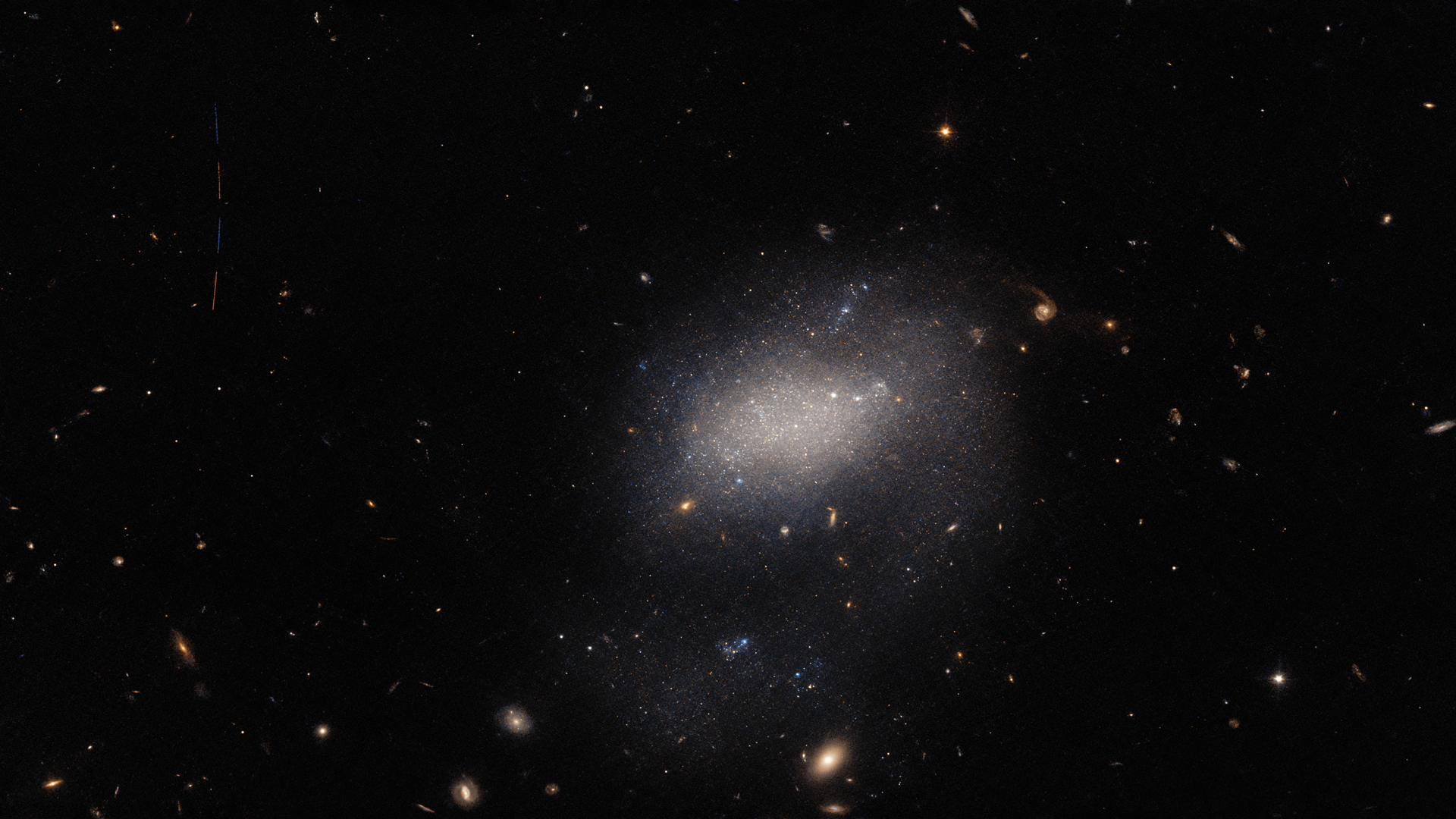Surprise asteroid photobombs Hubble telescope image. Can you spot it?
The asteroid surprised astronomers as they mapped the Milky Way's nearest galactic neighborhood.

The Hubble Space Telescope caught an unexpected asteroid streaking across a field of distant galaxies.
In the image, released on Monday (Jan. 16) by the European Space Agency (ESA), the asteroid can be seen as a row of four thin consecutive lines captured in alternating shades of blue and orange spreading from the left upper corner toward the middle section of the image.
The asteroid, ESA said in a statement, is only a few kilometers (miles) wide, and part of our solar system. The other objects seen in the image, however, are far more distant. The Hubble Space Telescope took the image as part of a campaign focused on observing all of the nearest galactic neighbors of our galaxy, the Milky Way.
Related: The best Hubble Space Telescope images of all time!
When the project was proposed, only 75% of the Milky Way's galactic neighbors had their picture taken by Hubble, ESA said in the statement. To capture the remaining 25%, astronomers used gaps between longer observation campaigns in the telescope's schedule.
"The project was an elegantly efficient way to fill out some gaps not only in Hubble's observing schedule, but also in our knowledge of nearby galaxies," ESA said in the statement.
The asteroid in the image appears as four separate streaks because the image consists of four exposures. Each line has a different color due to the filters used by Hubble's Advanced Camera for Surveys, which took the photographs.
Get the Space.com Newsletter
Breaking space news, the latest updates on rocket launches, skywatching events and more!
— NASA wants ideas to boost Hubble Space Telescope into a higher orbit with private spaceships
— Hubble Space Telescope's mesmerizing views of enormous spiral galaxy could help solve one of the biggest mysteries in astronomy
— Hubble Space Telescope captures exquisite view of nearby star cluster before it fades away
Dominating the image is a small galaxy known as UGC 7938. Located some 30 million light-years from Earth in the constellation Virgo, UGC 7938 appears as a grainy, fuzzy cloud at the center of the image. The dwarf galaxy, characteristic for its irregularity, is a primitive type that astronomers believe was common in the early universe when galaxies started to form.
All over the image, tens of background galaxies are scattered ranging from evolved spirals to simple ellipticals that have not yet developed a more intricate internal structure. The simple orange and white specks of light dotting the image are stars inside our galaxy, the Milky Way.
Follow Tereza Pultarova on Twitter @TerezaPultarova. Follow us on Twitter @Spacedotcom and on Facebook.
Join our Space Forums to keep talking space on the latest missions, night sky and more! And if you have a news tip, correction or comment, let us know at: community@space.com.

Tereza is a London-based science and technology journalist, aspiring fiction writer and amateur gymnast. Originally from Prague, the Czech Republic, she spent the first seven years of her career working as a reporter, script-writer and presenter for various TV programmes of the Czech Public Service Television. She later took a career break to pursue further education and added a Master's in Science from the International Space University, France, to her Bachelor's in Journalism and Master's in Cultural Anthropology from Prague's Charles University. She worked as a reporter at the Engineering and Technology magazine, freelanced for a range of publications including Live Science, Space.com, Professional Engineering, Via Satellite and Space News and served as a maternity cover science editor at the European Space Agency.








